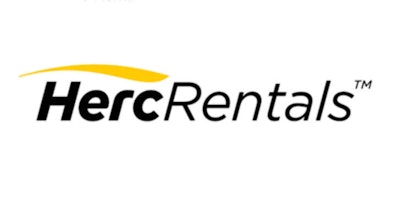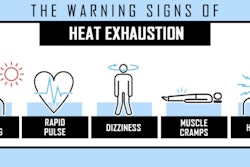
Herc Holdings Inc. reported financial results for the quarter ended June 30, 2017. Equipment rental revenues were $350.8 million and total revenues were $415.8 million in the second quarter of 2017, up from $327.9 million and $380.4 million, respectively, for the same period last year. The Company reported a net loss of $27.6 million, or $0.98 per diluted share, in the second quarter of 2017, compared to a net loss of $8.0 million, or $0.28 per diluted share, for the same period last year.
Equipment rental revenues increased 7.0%, average fleet at original equipment cost (OEC) increased 4.7%, and overall pricing improved 1.4% in the second quarter of 2017, versus the prior-year period. Rental revenues in key markets, excluding foreign currency, increased 8.9% and pricing in key markets improved 1.5% in the second quarter of 2017, compared to the prior-year period.
The second quarter results included impairment charges of $29.3 million, consisting primarily of a write-off related to the Company's decision to discontinue the development of new information technology systems initiated prior to the Company's spin-off last year. The quarter was also impacted by an increase of $18.3 million in interest expense related to debt issued in June 2016.
"We are pleased to note that our equipment rental revenue growth accelerated in the second quarter," said Larry Silber, president and chief executive officer. "Demand and pricing continued to improve year-over-year and our initiatives to diversify our fleet and expand our customer base are driving top-line growth. Upstream oil and gas markets appear to be stabilizing after more than two years of year-over-year declines. In addition, overall dollar utilization improved to 34.0%, the first year-over-year improvement since the initial downturn in oil and gas markets.
"We have accomplished a great deal in our first year as a stand-alone company. We are continuing to complete the separation from our former parent and implement major initiatives to grow our business and improve our operating efficiencies. We are encouraged by improving fundamentals in the rental equipment industry and remain confident in our strategy.
"In the quarter, we decided to discontinue the development of new information technology systems initiated prior to the spin-off. We will transition the legacy industry-standard systems that we have been using and redirect our investments to upgrade and enhance their functionality. This decision puts us on a solid path to achieve what's best for the business by leveraging our existing resources.”
Second quarter highlights
- Equipment rental revenues in the second quarter of 2017 were $350.8 million, compared to $327.9 million in the prior-year quarter, an increase of 7.0%. Revenues from upstream oil and gas markets excluding currency, were flat compared with the prior year, after nine consecutive quarters of year-over-year declines.
- Equipment rental revenues in key markets increased 8.9%, excluding currency, and accounted for 85% of the total. Key markets are defined as markets we currently serve outside of upstream oil and gas markets.
- Pricing in key markets increased 1.5% and overall pricing increased 1.4% in the second quarter of 2017, compared to the same period in 2016.
- Adjusted EBITDA in the second quarter of 2017 was $133.1 million compared to $130.6 million in the second quarter of 2016. Improved results in key markets and sales of revenue earning equipment were offset by increased investments in the business and stand-alone public company costs in the second quarter of 2017 compared to the prior-year period. See page A-4 for a description of the items excluded in calculating adjusted EBITDA.
- Average fleet unavailable for rent (“FUR”) was 13.1% in the month of June 2017, compared to 13.3% in June 2016, reflecting continued focus on improving equipment turnaround times.
- Dollar utilization of 34.0% in the second quarter of 2017 was up 50 basis points compared to the prior-year period, and up 200 basis points from the first quarter.
- Direct operating expenses were $168.9 million in the second quarter of 2017, compared to $159.2 million in the prior-year period. Approximately half of the increase was due to higher personnel-related expenses, while the remainder was due to increases in fleet-related and facility expenses.
- Selling, general and administrative expense (SG&A) increased to $78.8 million in the second quarter of 2017, compared to $74.2 million in the prior-year period. The increase is primarily due to higher information technology and stand-alone public company costs, as well as additional sales costs to drive revenue growth.
- Impairment charges of $29.3 million were recorded in the second quarter of 2017. The impairments related to the write-off of intangible assets previously capitalized as part of the development of new financial and point of sale systems of $26.2 million, and the impairment of certain revenue earning equipment of $3.1 million that was deemed held for sale at June 30, 2017.
- Interest expense in the second quarter of 2017 was $31.6 million, an increase of $18.3 million compared to the prior-year period, primarily reflecting the increase in the Company's debt on a stand-alone basis.
First half highlights
- Equipment rental revenues in the first half of 2017 were $671.4 million, compared to $635.7 million in the prior-year period, an increase of 5.6%. Revenue growth in key markets more than offset lower revenues in upstream oil and gas markets.
- Equipment rental revenues in key markets increased 8.7%, excluding foreign currency, and accounted for 85% of the total.
- Pricing in key markets increased 1.6% and overall pricing increased 1.3% in the first half of 2017, compared to the same period in 2016.
- The Company reported a net loss for the first half of 2017 of $66.8 million compared with a net loss of $9.5 million in the prior-year period.
- Adjusted EBITDA in the first half of 2017 was $230.9 million compared to $238.4 million in the comparable period in 2016. The change was primarily attributable to additional stand-alone public company and business transformation costs, and lower contributions from upstream oil and gas markets. These impacts offset improvement in the results of sales of revenue earning equipment and improvements in key markets. See page A-4 for a description of the items excluded in calculating adjusted EBITDA.
- Direct operating expenses were $338.0 million in the first half of 2017, compared to $317.9 million in the prior-year period. Nearly half of the increase was due to personnel-related expenses, while the remainder was primarily due to higher fleet-related and facilities expenses.
- Selling, general and administrative expense (SG&A) increased to $160.0 million in the first half of 2017, compared to $136.7 million in the same period of 2016. The increase is primarily due to higher information technology and stand-alone public company costs, as well as additional personnel costs to drive revenue growth.
- Interest expense in the first half of 2017 was $69.4 million, an increase of $49.6 million compared to the prior-year period, primarily reflecting the increase in the Company's debt on a stand-alone basis and a $5.8 million charge related to the redemption of $123.5 million of senior notes during the first half of 2017.
Capital Expenditures -- Fleet
- The Company reported net fleet capital expenditures of $72.2 million for the first half of 2017. Gross fleet capital expenditures were $160.8 million and disposals were $88.6 million. See page A-5 for the calculation of net fleet capital expenditures.
- At June 30, 2017, the Company had rental equipment of approximately $3.65 billion at original equipment cost (OEC), based on the American Rental Association guidelines. Average OEC increased 4.7% in the second quarter of 2017, and 5.0% in the first half of 2017, compared to the prior-year periods. Average fleet age was approximately 48 months as of June 30, 2017.



















